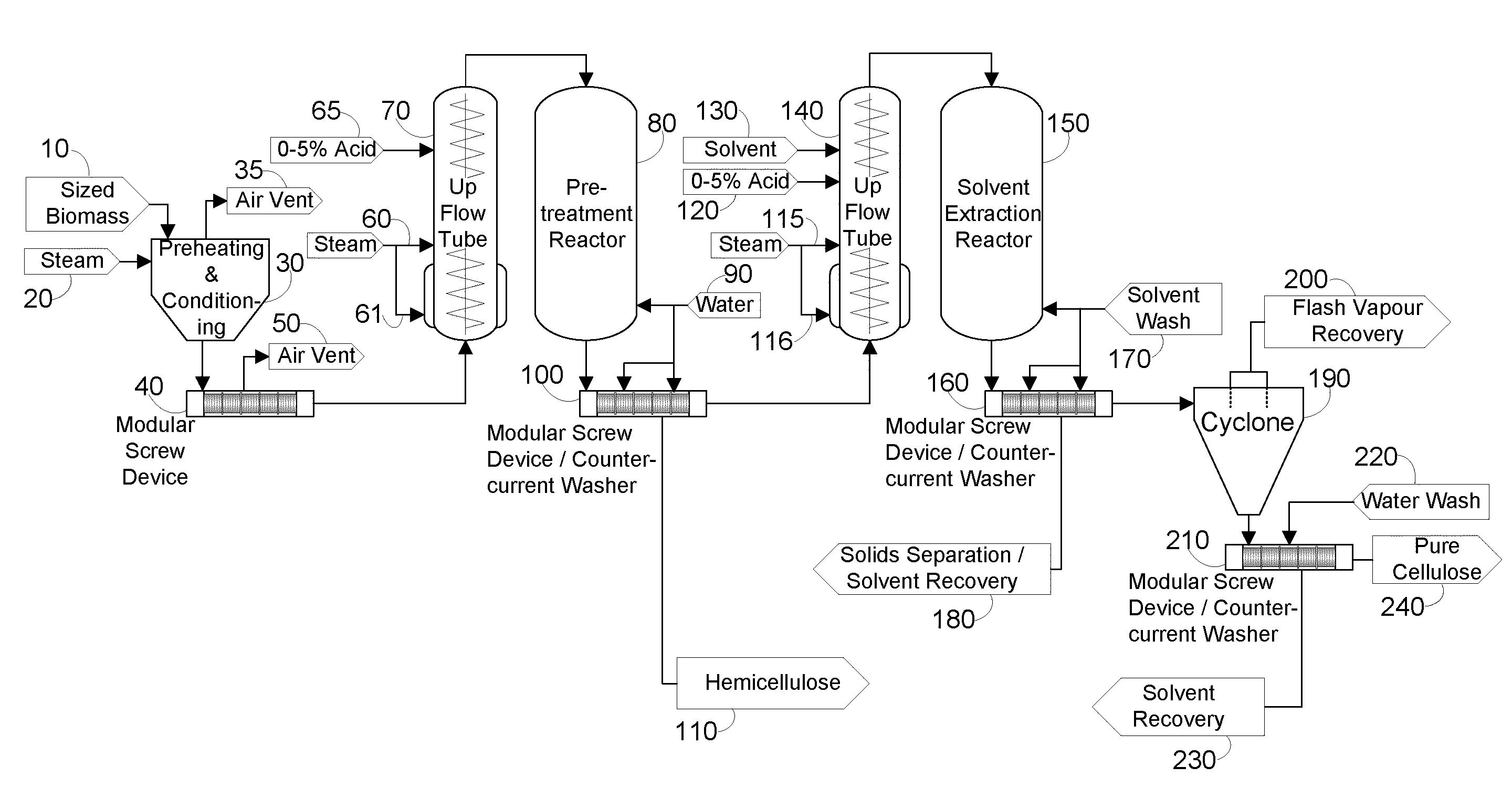Separation of reactive cellulose from lignocellulosic biomass with high lignin content
a technology of reactive cellulose and lignin, which is applied in the field of fractionation of lignocellulosic biomass, can solve the problems of counterproductive complete removal, achieve the effects of reducing the inhibitory effect of enzymes, reducing additional extraction, and being practical and commercially viabl
- Summary
- Abstract
- Description
- Claims
- Application Information
AI Technical Summary
Benefits of technology
Problems solved by technology
Method used
Image
Examples
Embodiment Construction
[0024]The process in accordance with the invention is a continuous two stage process. In the first stage, heat treatment is carried out under acid-catalyzed conditions and followed by pressing, with or without the presence of an eluent, to provide a hemicellulose fraction. In the second stage, acidic solvent extraction, washing and pressing provide a lignin rich stream and relatively pure reactive cellulose. Acid catalyzed hydrolysis of the hemicellulose can occur via autohydrolysis or with added acid catalyst or any combination therof depending on the feedstock.
[0025]A preferred process of the invention includes the steps of feed preparation, preheating, heating and catalyst addition, pretreatment, washing, solvent addition, solvent extraction, lignin removal, biomass recovery and ethanol recovery from purified cellulose.
[0026]The following description is one embodiment the invention is capable of other embodiments
Step 1 Feed Preparation
[0027]Biomass 10 is received, stored, cleaned...
PUM
| Property | Measurement | Unit |
|---|---|---|
| temperature | aaaaa | aaaaa |
| temperature | aaaaa | aaaaa |
| temperature | aaaaa | aaaaa |
Abstract
Description
Claims
Application Information
 Login to View More
Login to View More - R&D
- Intellectual Property
- Life Sciences
- Materials
- Tech Scout
- Unparalleled Data Quality
- Higher Quality Content
- 60% Fewer Hallucinations
Browse by: Latest US Patents, China's latest patents, Technical Efficacy Thesaurus, Application Domain, Technology Topic, Popular Technical Reports.
© 2025 PatSnap. All rights reserved.Legal|Privacy policy|Modern Slavery Act Transparency Statement|Sitemap|About US| Contact US: help@patsnap.com


